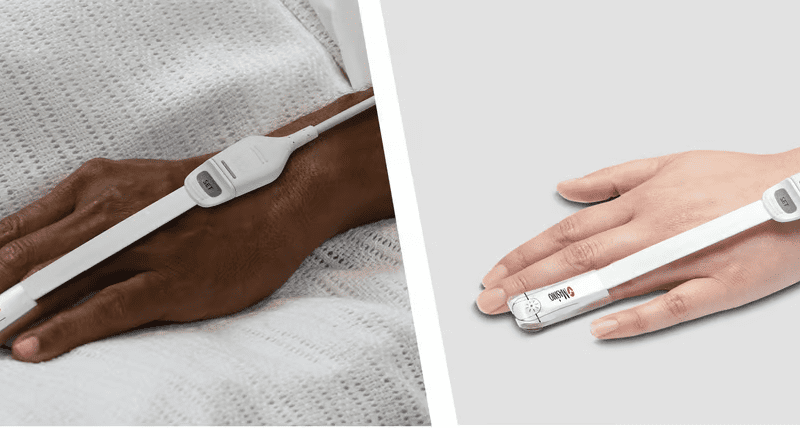Eliminating racial bias in pulse oximetry has been top of mind lately for many devicemakers and healthcare providers, as well as the FDA, which convened an advisory committee meeting earlier this month to discuss the issue and brainstorm solutions.
Masimo, for its part, has declared racial bias a non-issue in its own flagship SET pulse oximeter: Study results (PDF) published this month found no clinically significant difference in the device’s accuracy when used on both Black and white patients, the company announced Monday.
Pulse oximeters like Masimo’s are typically attached to a fingertip to measure oxygen levels in the blood. If oxygen saturation drops too low, in a condition called hypoxemia, it can cause difficulty breathing and a rapid heart rate, among other symptoms, and can be life-threatening.
Those results come after an analysis published this summer found that Asian, Black and Hispanic patients hospitalized for COVID-19 were more likely than their white counterparts to have low oxygen saturation levels go overlooked—potentially delaying the delivery of needed treatments, such as supplemental oxygen.
Masimo’s study looked back at pulse oximeter readings gathered from 39 Black and 36 white patients between October 2015 and July 2021, totaling more than 7,000 measurements. It was led by the company’s chief science officer, Steven Barker, M.D., Ph.D., and chief medical officer, William Wilson, M.D.
When those readings were compared to arterial blood gas measurements taken at the same time, the SET device’s results differed from the benchmark by an average of just 1.42% for Black patients and 1.35% for white patients. For comparison, the FDA’s threshold for pulse oximeter device clearance allows for a gap as large as 3% between a device’s numbers and corresponding arterial blood gas readings.
Negative bias—indicating a tendency to underestimate the actual measurement—clocked in at 0.2% for Black patients and 0.05% for white patients. According to Masimo, that 0.15% difference isn’t clinically significant, nor would the biases be visible to device users, since the SET pulse oximeters, like other similar devices, produce measurements only to the nearest 1%.
Barker and Wilson attributed the Masimo device’s virtual lack of racial bias to its “engineering design and testing paradigm,” they said in Monday’s announcement.
While other pulse oximeters work by emitting red and infrared light, then measuring how much of that light is absorbed by the blood, Masimo’s version “uses that conventional algorithm along with four additional signal processing engines that all run in parallel,” according to Barker and Wilson. Those signal processing engines are designed to home in on the true blood oxygen levels in the blood, regardless of a patient’s movement, blood flow, tissue thickness, bone density and skin pigment.
On top of that, they added, the device was also developed and validated using “nearly equal numbers” of subjects with dark and light skin tones.

